Key takeaways:
-
A Rottweiler's head is more than just strong; it's built for function. The broad skull, powerful jaw, and alert ears all played a role in their historical working roles.
-
Their eyes are incredibly expressive, conveying a wide range of emotions, from alertness and focus to playfulness and affection.
-
Their ears are like mobile radar dishes, helping them pinpoint sounds and communicate their mood, whether they're alert, relaxed, or anxious.
-
Their muzzles are not only strong but also highly sensitive, allowing them to explore the world through their incredible sense of smell.
-
By learning to read the subtle interplay of their eyes, ears, and muzzle, you can deepen your understanding of your Rottweiler's emotions and strengthen your bond.
Rottweilers have this rep for being tough guys, and sure, they can be protective. But their faces tell a way more interesting story. One minute they’re giving you this goofy grin that could melt a glacier, the next they’re laser-focused on a squirrel across the park, their whole face radiating pure determination.
In this “head study,” we’re gonna dive deep into the fascinating world of Rottweiler facial expressions. We’ll decode those soulful eyes, analyze those radar ears, and figure out what those powerful muzzles are trying to tell us. Get ready to become a Rottweiler whisperer!
That Rottweiler Head: More Than Just a Pretty Face
Let’s be honest, one of the first things you notice about a Rottweiler is the shape of their head. It’s strong, it’s blocky, and it definitely makes a statement. But there’s more to that classic Rottweiler head shape than just good looks. It’s a window into their history, their personality, and even their health.
Built for Power
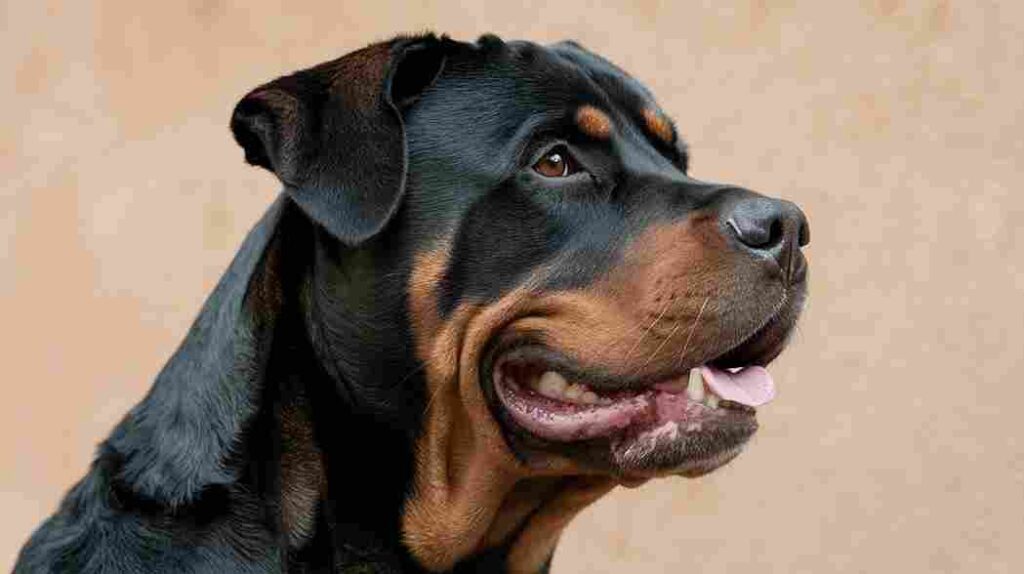
Rottweilers were originally bred to be working dogs, and their head shape reflects that. As described in Rottweilers for Dummies by Richard G. Beauchamp, “The Rottweiler’s head is a masterpiece of nature’s engineering, perfectly designed for the tasks it was bred to perform.” That broad skull? It houses a powerful jaw with a strong bite, essential for tasks like herding cattle and guarding property. Those alert ears? Perfect for picking up sounds and assessing their surroundings. And those expressive eyes? They convey intelligence, confidence, and a whole lot of personality.
Rottweilers boast a powerful, broad-skulled head that embodies their robust working lineage. This distinctive head shape is more than aesthetic—it hints at the breed’s remarkable strength, including their impressive 328 PSI bite force, detailed in our companion article: Rottweiler Bite Force: Amazing 328 PSI Power Revealed (2025 Guide).
The Ideal Look
While there can be some variation within the breed, the classic Rottweiler head is known for its balanced proportions. It’s not overly long or narrow, and it fits in proportion with the rest of their body. Think of it like a well-crafted sculpture – everything in its right place. This balance is not only aesthetically pleasing but also contributes to their overall functionality.
[Image suggestion: A profile shot of a Rottweiler’s head, showcasing the balanced proportions and slightly rounded skull.]
Why Does Head Shape Matter?
Beyond aesthetics, a proper head shape is important for a Rottweiler’s overall well-being. A well-proportioned head contributes to efficient movement, a strong bite, and even proper breathing. So, it’s not just about looking good; it’s about being healthy and functional too. In The Rottweiler, Joan H. Walker explains that “the Rottweiler’s head shape is an important breed characteristic that should be considered when evaluating a dog’s conformation and overall health.”
Beyond the Stereotype
Rottweilers sometimes get a bad rap because of their powerful appearance, but their head shape tells a story that goes beyond stereotypes. It’s a reminder of their working heritage, their intelligence, and their ability to form strong bonds with their humans.
So, the next time you admire a Rottweiler’s head, take a moment to appreciate all that it represents – strength, intelligence, and a whole lot of heart.
-
Did you know that the shape of a Rottweiler's head can also give you clues about their temperament? A dog with a well-proportioned head and soft expression is more likely to be friendly and approachable, while a dog with an overly large head and a tense expression might be more dominant or assertive.
Rottweiler Head: Eyes as Windows to the Soul
Have you ever gazed into a Rottweiler’s eyes and felt like you were looking into their very soul? There’s a depth and intensity there that’s truly captivating. Their eyes are a window into their intelligence, their emotions, and their unique personality.
Shape and Color:
Rottweilers are known for their almond-shaped eyes, which are typically a rich, dark brown color. These dark eyes often contrast beautifully with their black and tan markings, creating a striking and expressive look. As described in Rottweilers for Dummies, “Their dark, almond-shaped eyes contribute to their intelligent and alert expression.”
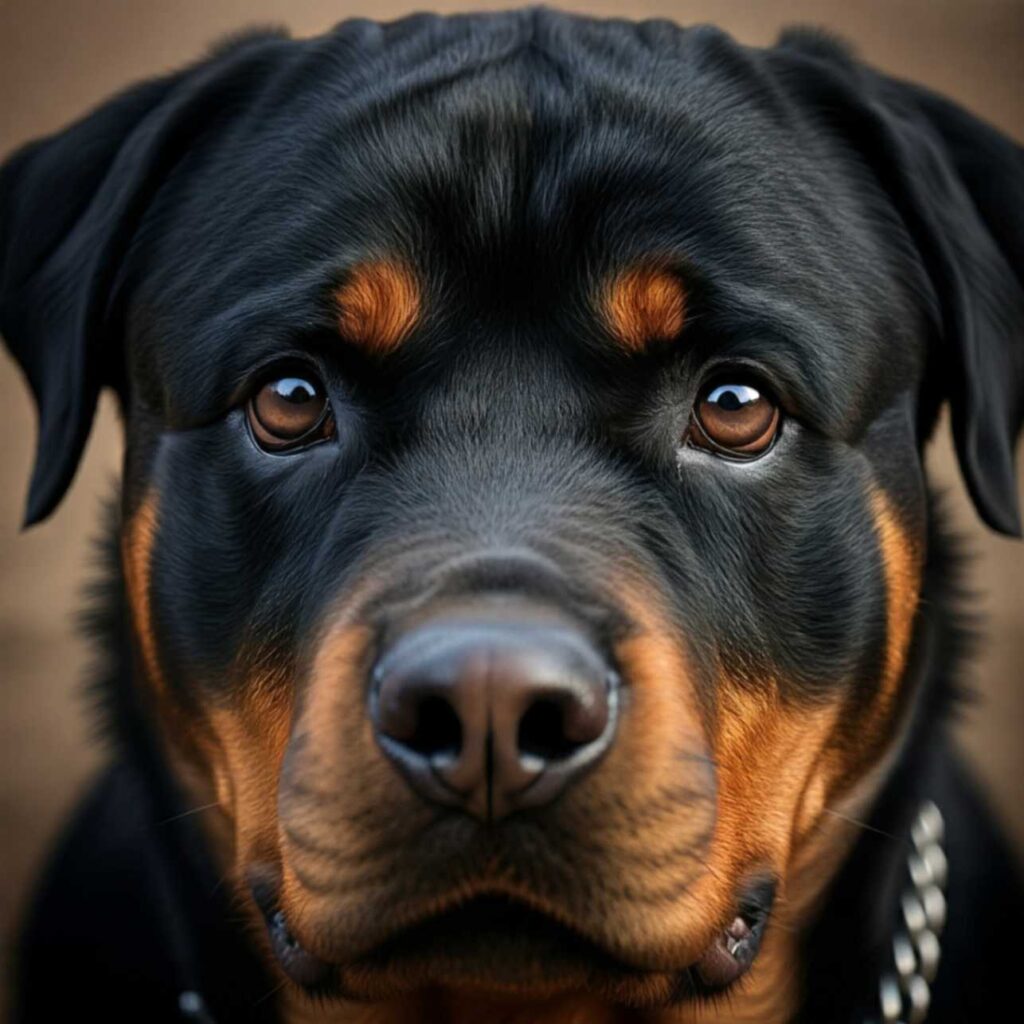
A World of Expression:
Those eyes can convey a whole spectrum of emotions. When a Rottweiler is alert, their eyes are bright and focused, taking in every detail of their surroundings. When they’re feeling playful, their eyes might sparkle with mischief. And when they’re looking at their loved ones, their eyes soften with affection and warmth. In The Rottweiler, Joan H. Walker writes, “Their eyes can be surprisingly soft and expressive, conveying a range of emotions from joy and excitement to concern and empathy.”
A Personal Story:
I remember the first time I truly connected with a Rottweiler’s gaze. It was at a dog park, and a big, goofy Rottie named Bruno came bounding towards me. He stopped right in front of me, sat down, and looked up at me with those soulful brown eyes. In that moment, I felt like he was looking right through me, sensing my intentions and offering his unconditional friendship. It was a powerful experience that solidified my love for this breed.
Beyond Words:
Rottweilers might not be able to speak our language, but their eyes speak volumes. They communicate their needs, their emotions, and their unwavering loyalty through those expressive windows to their soul.
-
Did you know that the position of a Rottweiler's eyebrows can also contribute to their expression? When they raise their eyebrows, it can give them a curious or questioning look.
Ears: Tuning In to the World
Those triangular ears perched atop a Rottweiler’s head aren’t just adorable; they’re highly functional communication tools! They play a key role in how these dogs perceive their environment and express themselves.
Shape and Placement:
Rottweilers have medium-sized ears that are triangular in shape, with a rounded tip. They’re set high and wide on the head, giving them a broad, alert expression.
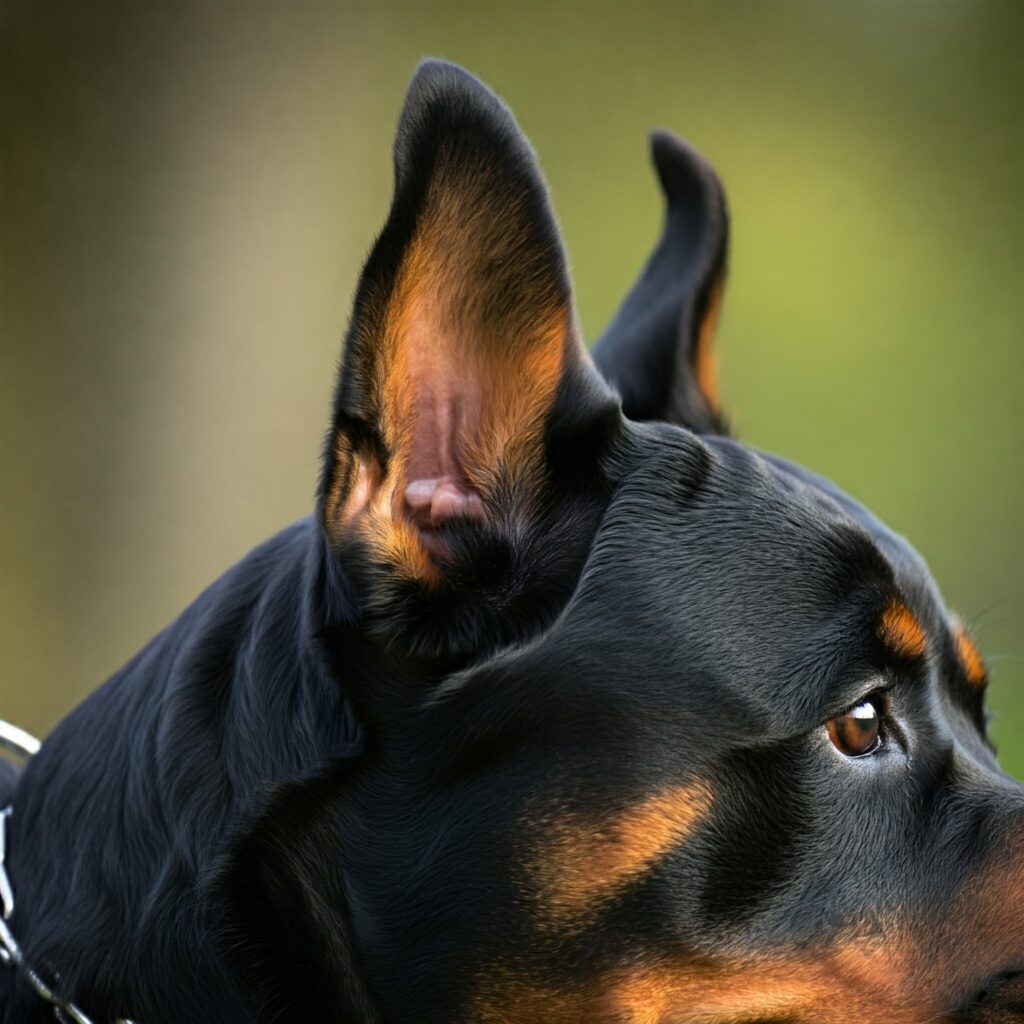
Movement and Communication:
One of the fascinating things about Rottweiler ears is how mobile they are! They can swivel and tilt to capture sounds from all directions. But their movement also provides valuable insights into a Rottweiler’s mood and intentions.
Alert and Focused: When a Rottweiler is alert or interested in something, their ears will be held erect and forward, like two little radar dishes scanning the environment. This posture is often accompanied by a focused gaze and a still body, indicating that they’re paying close attention to their surroundings.
Relaxed and Friendly: When a Rottweiler is relaxed and comfortable, their ears may be held slightly back or to the sides. This often signals that they’re feeling friendly and approachable.
Anxious or Submissive: If a Rottweiler is feeling anxious or submissive, their ears may be pulled back flat against their head. This posture is often accompanied by other body language signals, such as a lowered tail and averted gaze.
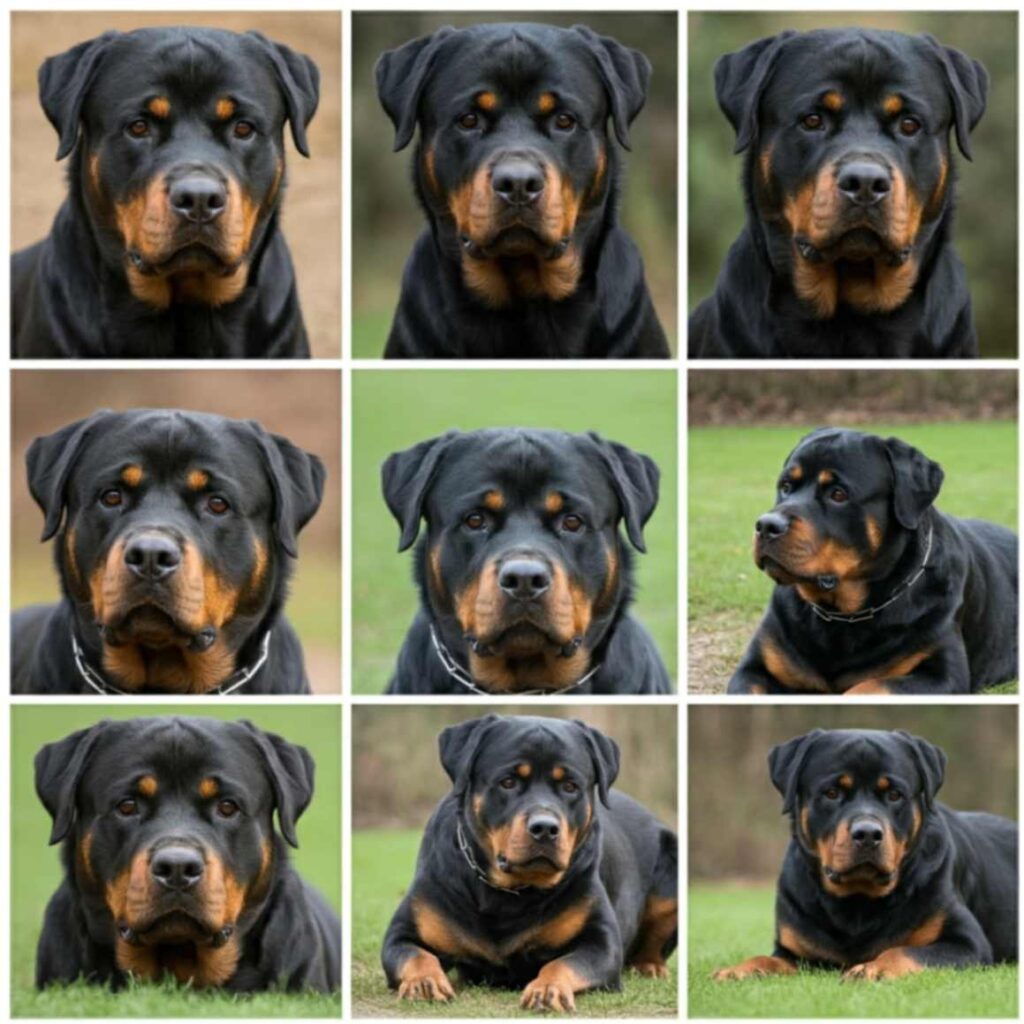
-
Did you know that a Rottweiler's ears are exceptionally good at detecting high-pitched sounds? This makes them excellent watchdogs, as they can pick up on subtle noises that other dogs might miss.
Muzzle: Strength and Sensitivity
A Rottweiler’s muzzle isn’t just about strength; it’s a sensory powerhouse and a key to understanding their world.
Structure:
Rottweilers have a broad, short muzzle that’s packed with power. Their strong jaws and well-developed teeth give them a formidable bite, which was essential for their historical roles as herding and guarding dogs. But don’t let that strength intimidate you! A well-trained Rottweiler knows how to use their powerful jaws responsibly, whether it’s for gently carrying a toy or giving you a soft “kiss.”
Sensory Perception:
That muzzle isn’t just about strength; it’s also a hub for sensory information. Rottweilers have an incredible sense of smell, thanks to the millions of scent receptors packed into their nasal cavity. They use their noses to explore the world around them, sniffing out everything from delicious treats to potential dangers.
Think of their muzzle as a super-powered sniffing machine! They can detect subtle scents that we humans can’t even imagine, and they use this information to navigate their environment, communicate with other dogs, and even detect changes in their human’s emotions.
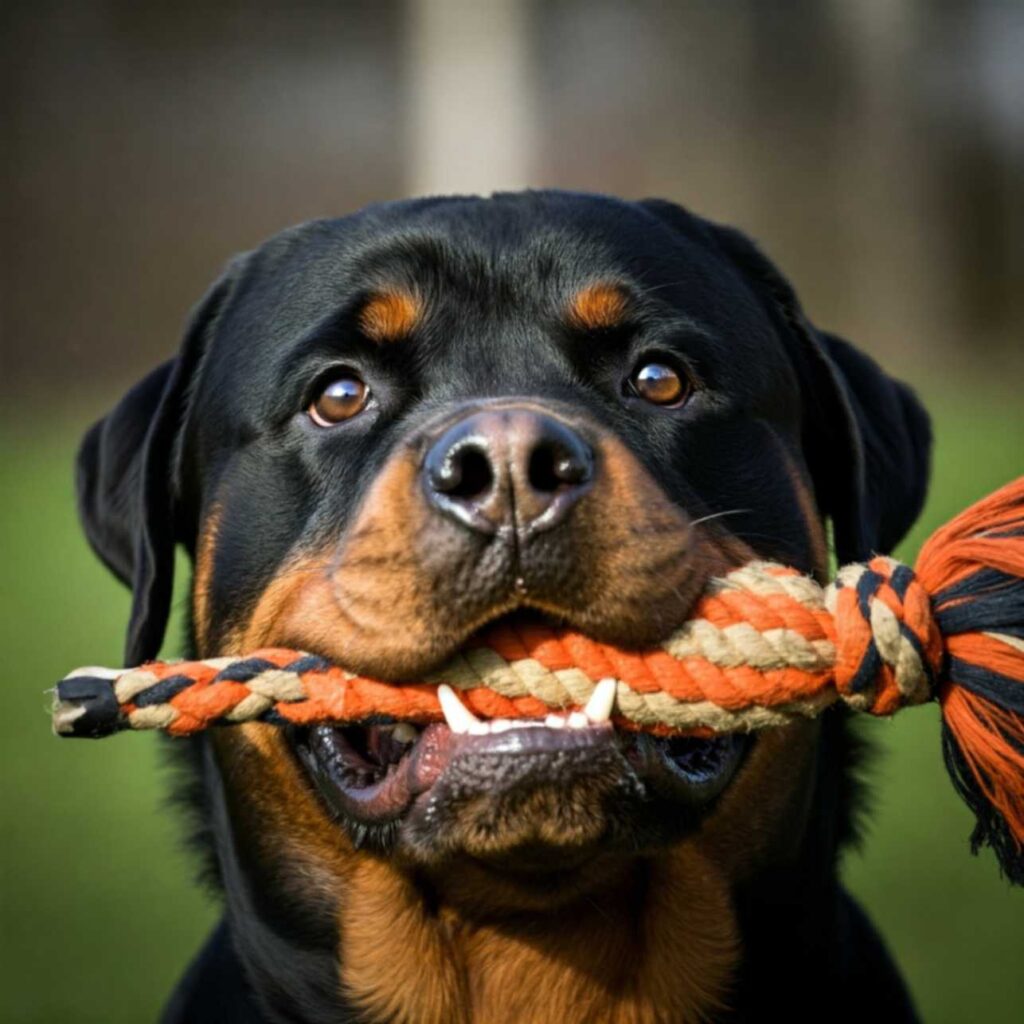
A World of Scents:
Imagine being able to experience the world through smell the way a Rottweiler does. Every walk would be an adventure, every encounter a symphony of scents. From the fresh scent of rain on the grass to the subtle aroma of your favorite meal cooking in the oven, their world is rich with olfactory information.
-
Did you know that a Rottweiler's sense of smell is estimated to be 100,000 to 1,000,000 times more sensitive than a human's? That's why they're so good at tracking, sniffing out hidden objects, and even detecting changes in a person's scent that might indicate a medical condition.
Reading a Rottweiler's Face: It's All in the Details
We’ve explored the individual features of a Rottweiler’s face – the eyes, ears, and muzzle. Now, let’s put it all together and learn how to read their expressions like a pro! To better understand your Rottweiler’s communication, VCA Animal Hospitals provides a helpful guide to canine body language. A Rottweiler’s face is like a symphony of expression, with each feature playing a part in conveying their emotions and intentions
Combining the Features:
A Rottweiler’s face is like a symphony of expression, with each feature playing a part in conveying their emotions and intentions. Their eyes provide the initial spark, conveying focus, intensity, or softness. Their ears add another layer of information, signaling alertness, relaxation, or even anxiety. And their muzzle, with its subtle movements and powerful jaws, completes the picture, adding nuances of playfulness, confidence, or even apprehension.
Common Expressions:
By paying attention to the interplay of these features, you can learn to decipher a Rottweiler’s mood and understand what they’re trying to communicate. Here are a few common expressions you might encounter:
- The Alert Rottie: Eyes bright and focused, ears erect and forward, muzzle slightly tense. This expression indicates that they’re paying close attention to their surroundings, perhaps assessing a new situation or focusing on a specific sound or movement.
[Image suggestion: A Rottweiler with an alert expression, looking intently at something in the distance.] - The Playful Rottie: Eyes sparkling, ears relaxed or slightly back, mouth open in a grin, perhaps with a playful pant or a wagging tail. This expression signals that they’re feeling happy and playful, ready for a game of fetch or a romp in the park.
[Image suggestion: A Rottweiler with a playful expression, perhaps with a toy in their mouth or a happy grin.] - The Submissive Rottie: Eyes averted, ears flattened against the head, lips slightly pulled back, possibly licking their lips or yawning. This expression indicates that they’re feeling submissive or unsure, perhaps in the presence of a more dominant dog or when meeting a new person.
[Image suggestion: A Rottweiler with a submissive expression, perhaps with their head lowered and their tail tucked.] - The Anxious Rottie: Eyes wide and worried, ears pulled back, muzzle tense, possibly panting or whining. This expression signals that they’re feeling anxious or stressed, perhaps due to a loud noise, an unfamiliar environment, or separation from their loved ones.
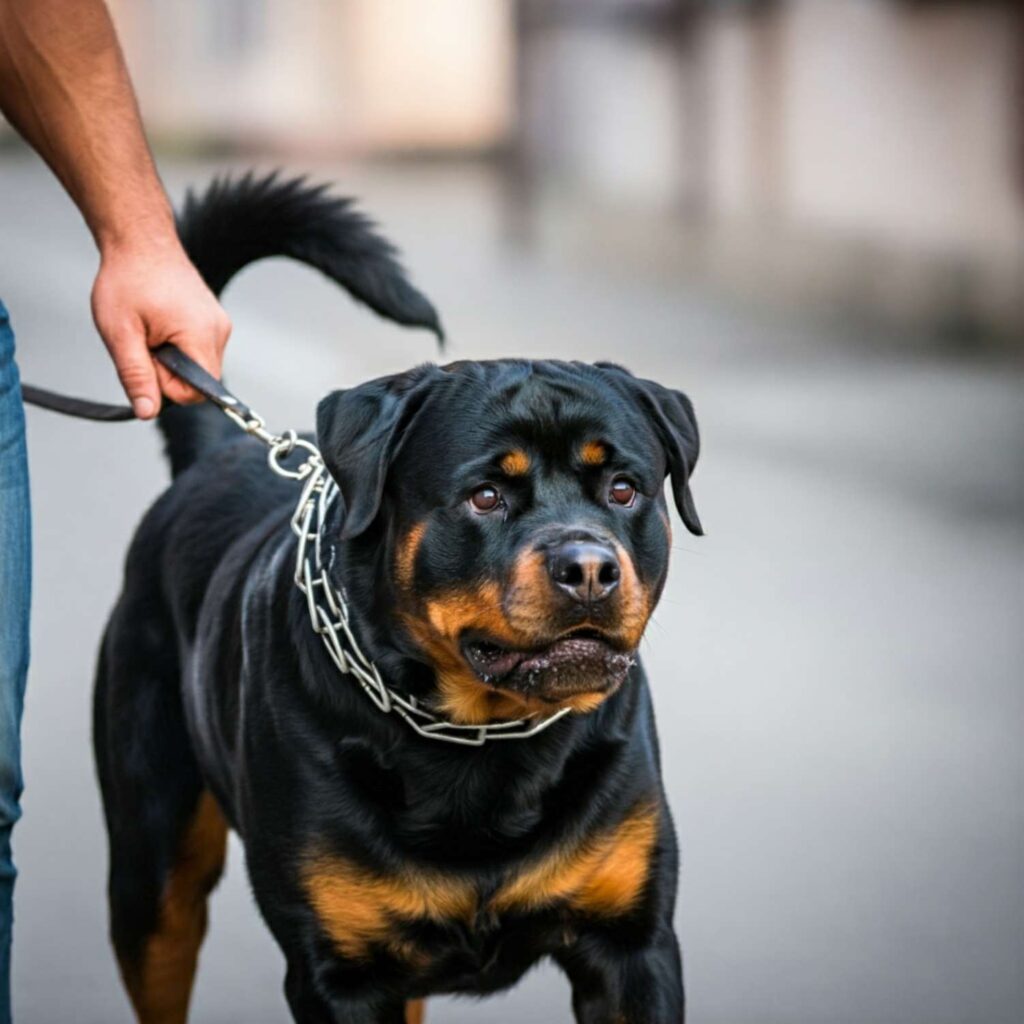
A Rottweiler’s anxious expression, with its ears pulled back, its tail tucked, and its eyes wide with fear.
Becoming a Rottweiler Whisperer:
By learning to read these expressions, you can deepen your understanding of your Rottweiler’s emotions and needs. You’ll be able to anticipate their reactions, provide appropriate support, and strengthen your bond with your canine companion.
Conclusion: More Than Meets the Eye
We’ve journeyed through the landscape of a Rottweiler’s face, exploring the nuances of their eyes, ears, and muzzle. We’ve seen how these features work together to create a symphony of expressions, reflecting their intelligence, emotions, and unique personalities.
It’s easy to get caught up in the stereotype of the Rottweiler as a tough, intimidating guard dog. But as we’ve discovered, there’s so much more to these dogs than meets the eye (pun intended!). Their faces reveal a depth of intelligence, sensitivity, and affection that often goes unnoticed.
The next time you encounter a Rottweiler, take a moment to truly look at their face. Observe the subtle shifts in their eyes, the tilt of their ears, the gentle curve of their muzzle. You might be surprised by what you discover.
A Final Thought:
A Rottweiler’s face is a reflection of their inner world – a world of loyalty, courage, and unwavering love. By learning to read their expressions, we can deepen our connection with these incredible dogs and appreciate the unique individuals they are.
FAQs: Your Burning Questions Answered!
How can I tell if my Rottweiler is happy?
Answer: A happy Rottweiler will often have a relaxed expression with soft eyes, slightly drooping ears, and a loose, open mouth. They might also wag their tail, lean into you for affection, or even give you a playful "grin."
Do Rottweilers smile?
Answer: While they don't smile in the same way humans do, Rottweilers can definitely express happiness and contentment through their facial expressions. A relaxed, open mouth with a slight upturn at the corners can be a sign of a happy Rottie, especially when combined with soft eyes and a wagging tail.
Why does my Rottweiler stare at me?
Answer: Rottweilers are known for their intense gaze, which can sometimes feel a bit intimidating. But don't worry, it's usually a sign of affection and connection! They might be trying to read your emotions, anticipate your next move, or simply enjoy your presence.
How can I better understand my Rottweiler's communication?
Answer: Spend time observing your Rottweiler's facial expressions in different situations. Pay attention to their body language cues, such as their tail position, posture, and vocalizations. The more you observe, the better you'll become at understanding their unique communication style. You can also learn more about canine communication by reading books, watching videos, or even consulting with a certified dog trainer or behaviorist.
Eager to learn more about the Rottweiler breed’s rich history? Delve into their fascinating journey from Roman times to modern day in our comprehensive guide: “101 Amazing Rottweiler Breed Facts: History, Temperament & Care”


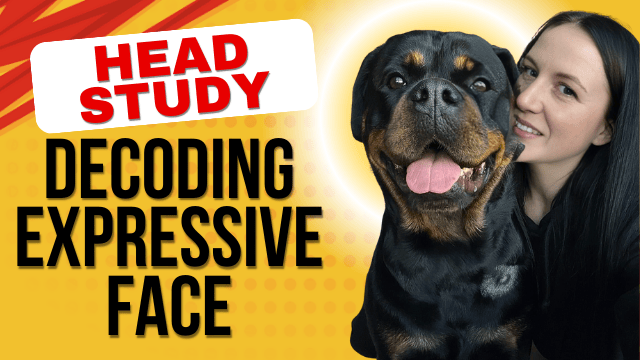
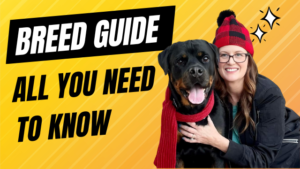
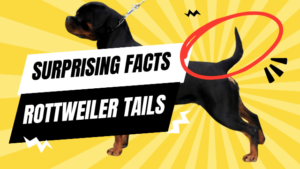
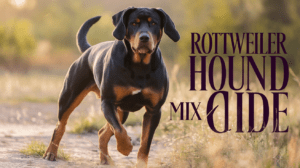
Pingback: 101 Rottweilers: A Breed Guide From Roman Roads to Modern Families
Pingback: 101 Amazing Rottweiler Breed Facts: History, Temperament & Care